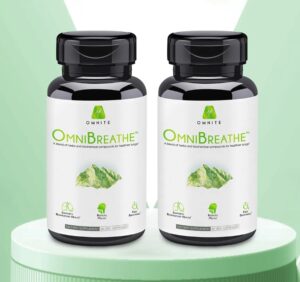Have you ever stopped to think about the journey your food takes from the farm to your table? In this blog post, we’ll take a deep dive into the fascinating world of bảie production and consumption. From its humble beginnings on family-owned farms in Vietnam, to its growing popularity as a healthy and sustainable food option around the world, there’s no denying that bảie is more than just a simple leafy green vegetable. So buckle up and get ready for an exciting adventure through time and culture as we explore everything there is to know about this versatile superfood!
The history of bảie production in Vietnam
Vietnamese bảie production dates back to the 14th century. The bảie is a type of rice paper that is used in many Vietnamese dishes, such as spring rolls and bánh mì sandwiches. The process of making bảie is very labor-intensive, and it begins with soaking rice straw in water for several days.
After the straw has been soaked, it is pounded into a pulp and then strained to remove any impurities. The pulp is then mixed with tapioca flour and water to form a dough. This dough is then spread out onto a bamboo mat and left to dry in the sun for several hours.
Once the dough has dried, it is cut into small squares and then fried in hot oil until crispy. The finished product is then used to wrap various fillings, such as meats, vegetables, and tofu.
Bảie are an essential part of Vietnamese cuisine and are enjoyed by both locals and visitors alike. If you find yourself in Vietnam, be sure to try some of these delicious dishes!
Bảie: The Surprising Superfood You Need to Try Today
Bảie (pronounced “bye”) is a type of rice that is native to Vietnam. It is a sticky, starchy rice that is often used in Asian cuisine. Bảie has a nutty flavor and a chewy texture.
Bảie is not only delicious, but it is also incredibly nutritious. This superfood is packed with vitamins, minerals, and antioxidants. Because of its nutritional value, bảie has been traditionally used to treat a variety of illnesses and health conditions.
Today, bảie is gaining popularity as a health food due to its many health benefits. Studies have shown that bảie can help lower cholesterol, improve blood sugar control, and reduce inflammation. Additionally, bảie is a good source of fiber and protein. These nutrients are essential for maintaining a healthy weight and preventing chronic diseases such as obesity and heart disease.
If you’re looking for a new superfood to add to your diet, try bảie! This delicious rice can be enjoyed in many different ways. Try it in soups, stir-fries, or even desserts.
The process of making bảie
Bảie is a type of fermented alcohol that is popular in Vietnam. It is made from rice, water, and yeast, and undergoes a long fermentation process. The finished product has an alcohol content of around 15%.
Bảie production begins with the cultivation of rice. After the rice is harvested, it is soaked in water for several days. Then, the rice is drained and mixed with yeast. The mixture is placed in a container and left to ferment for several months.
Once the fermentation process is complete, the bảie is distilled to increase its alcohol content. The finished product is then bottled and sold. Bảie is typically consumed neat or with ice.
How bảie is consumed in Vietnam
Bảie consumption in Vietnam is a fascinating cultural phenomenon. The country is home to a wide variety of bảie producers, each with their own unique methods and techniques. And, as with any foodstuff, the way bảie is consumed varies from region to region.
In the north of Vietnam, bảie is often consumed as a snack or side dish. It is typically steamed or boiled, then served with dipping sauces or salads. In the central regions, bảie is often used as an ingredient in soups and stews. And in the south, bảie tends to be eaten as a main course, grilled or roasted and served with rice.
No matter where you are in Vietnam, one thing is for sure: bảie will always be served fresh. That’s because this humble little root vegetable spoils quickly once it has been harvested. As such, most Vietnamese households will only buy enough bảie for a few days at a time. This ensures that they can enjoy the vegetable at its peak of freshness and flavor.
The health benefits of bảie
The bảie plant is a native of Vietnam and has been used in traditional medicine for centuries. The bảie plant is prized for its health benefits, which include the ability to boost the immune system, fight inflammation, and improve gut health. The bảie plant is also a rich source of antioxidants and anti-inflammatory compounds.
Recipes for bảie
Bảie production and consumption is a fascinating story that begins on the farm. Farmers in Vietnam grow a variety of bảies, including cucumber, eggplant, and bitter gourd. After the bảies are harvested, they are transported to the market where they are sold to vendors.
Vendors then take the bảies to their customers, who use them to make a variety of dishes. Some popular dishes made with bảies include bánh xèo (Vietnamese crepes), canh chua (sour soup), and Gòi cuón (spring rolls).
No matter how they are prepared, bảies are a delicious and healthy addition to any meal.
Conclusion
We have learned about the fascinating journey from farm to table of bảie production and consumption. From its origin as a local delicacy in Vietnam, it has now become a global food phenomenon with a large presence in the US market. Thanks to its unique flavor and health benefits, bảie is increasingly becoming one of the most popular ingredients for chefs around the world and can be found on menus everywhere. With its story of resilience, innovation, and culture embedded into every bite, this Vietnamese specialty is sure to continue delighting us all for years to come!





More Stories
Mastering Green Tea Loose Leaf: Benefits, Tips, and How to Brew Perfect Loose Leaf Black Tea!
Tropical Vegetables You Should Grow in Your Garden
Reel in the Best Catch: Your Guide to Buying Frozen Fish for Sale!